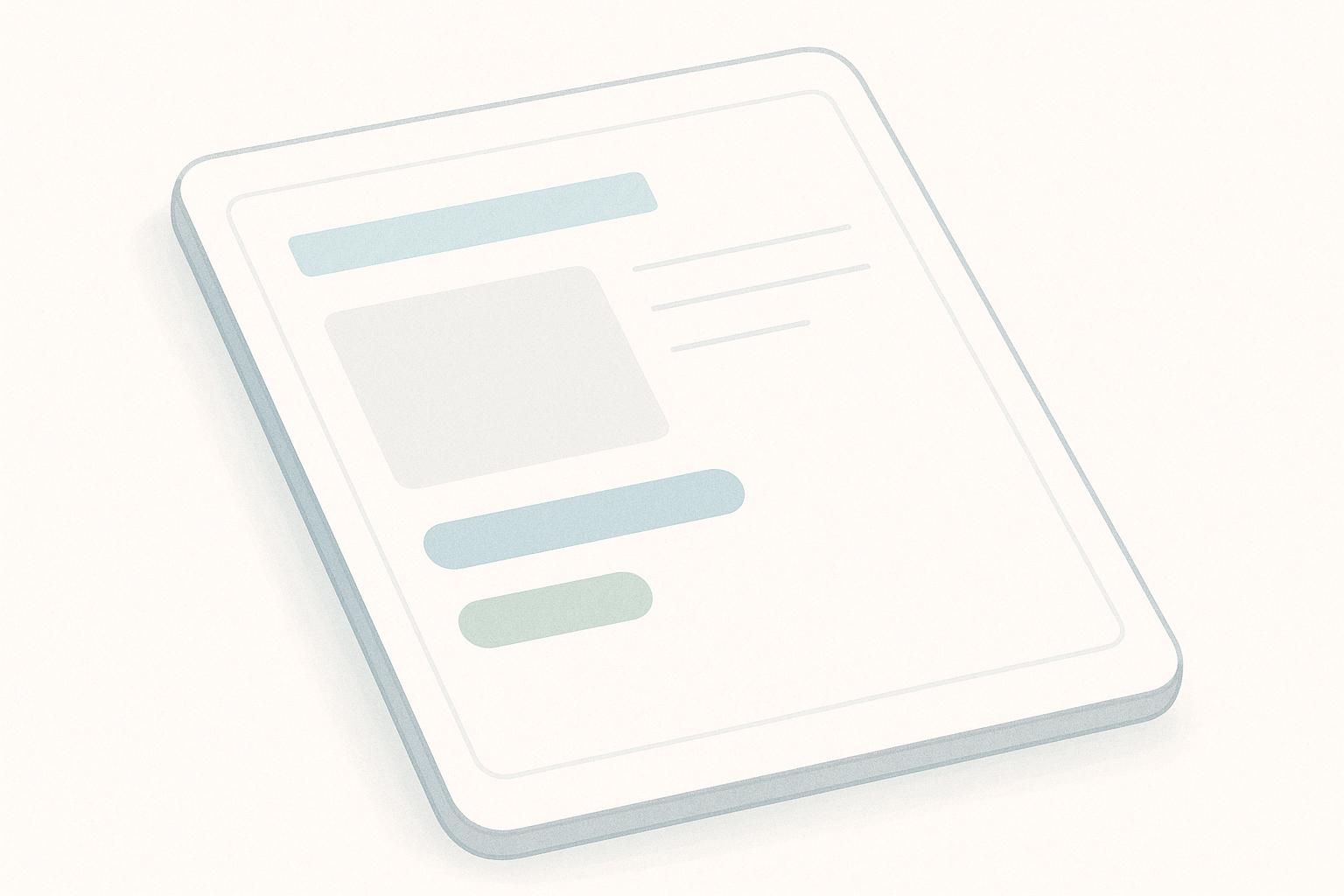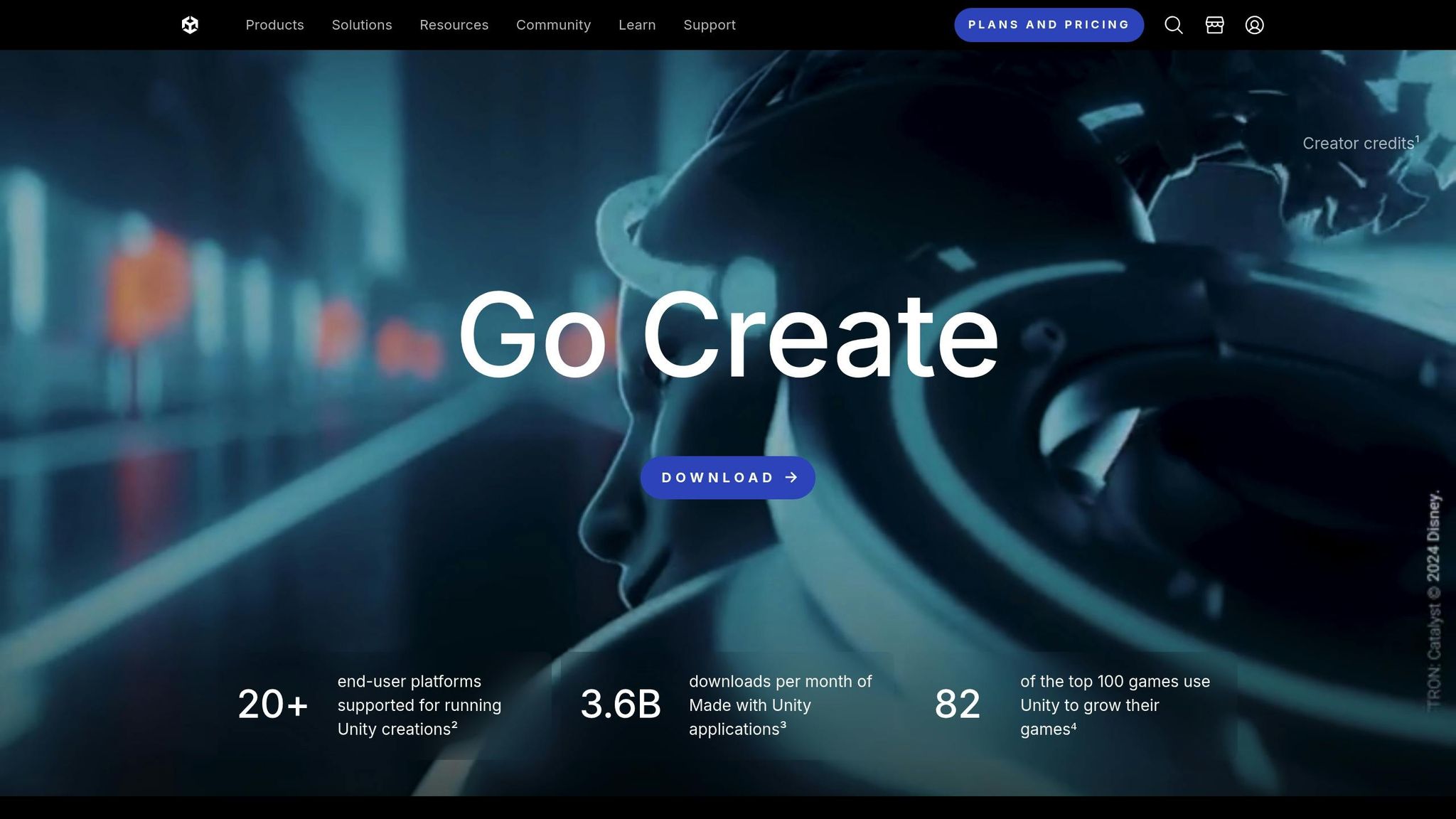In 2024, designing a great user experience (UX) for SaaS applications is crucial for success. A well-designed UX boosts user engagement, reduces churn, and increases revenue. Here are the 10 best practices for SaaS UX design:
- Streamlined Onboarding: Simplify the signup process, provide clear instructions, and use interactive elements to guide users through onboarding quickly and smoothly.
- Personalization: Tailor the experience to each user's needs and preferences using data, machine learning, and AI tools.
- Intuitive Navigation: Keep navigation simple, consistent, and familiar, with clear labels, user-friendly search, and common design patterns.
- Accessibility: Ensure content is perceivable, navigation is operable, content is understandable, and compatibility with assistive technologies.
- Responsive Design: Implement mobile-first design, flexible layouts, prioritized content and functionality, and optimize performance for all devices.
- Performance Optimization: Focus on fast loading times, optimized server response, caching, CDNs, minimized HTTP requests, and compressed files and images.
- Feedback-driven Iteration: Collect user feedback regularly, analyze and prioritize it, make iterative improvements, and close the feedback loop.
- Security and Privacy: Implement strong authentication, access controls, data encryption, and regular security audits and risk assessments.
- Thorough UX Research: Conduct user interviews and surveys, analyze competitors and trends, and create user personas and journey maps.
- Effective Search Capabilities: Include efficient search options, filters, AI-powered suggestions, and analytics to reduce user frustration and improve engagement.
By focusing on user-centered design and following these best practices, you can create a smooth, engaging, and secure user experience for your SaaS application, leading to increased customer loyalty, a positive brand image, and business growth.
Related video from YouTube
1. Streamlined Onboarding
Streamlined onboarding is key for SaaS applications. It sets the tone for the user's entire experience and can influence their decision to keep using the product. A good onboarding process should be simple, clear, and easy to follow.
To achieve this, focus on reducing friction in the onboarding process. This can be done by:
- Simplifying the signup process to reduce the number of steps required to get started
- Providing clear and concise instructions to guide users through the process
- Using interactive elements such as tooltips, modals, and banners to offer helpful hints and tips
- Offering personalized demos or support to address specific pain points
- Implementing user onboarding checklists to drive activation and feature adoption
By streamlining the onboarding process, you can increase user engagement, reduce churn, and improve overall customer satisfaction. The goal of onboarding is to get users to experience the value of your product as quickly as possible.
For example, Canva's onboarding process is highly effective because it allows users to choose their own adventure. By asking new signups what they plan to use the tool for, Canva can tailor the onboarding experience to their specific needs and goals. This approach not only increases user engagement but also helps to reduce churn by ensuring users see the value of the product early on.
2. Personalization
Personalization helps SaaS companies meet the specific needs of their users. By using data and machine learning, companies can create experiences that feel unique to each user. This goes beyond basic information and tailors the experience based on individual preferences or even mood.
For example, a fitness app might suggest different workouts depending on whether a user wants to relax or get energized. The goal is to treat each customer as an individual, not just a number.
To personalize your SaaS product effectively, follow these best practices:
- Update user data regularly: Keep your user information current to provide relevant experiences.
- Incorporate user feedback: Use feedback to improve features and content.
- Use AI tools: Implement AI for dynamic personalization.
3. Intuitive Navigation
Intuitive navigation keeps users engaged and satisfied with your app. Poor navigation can lead to frustration and user churn. By using clear navigation patterns, you help users find content, complete tasks, and reach their goals.
To improve navigation, follow these tips:
- Keep it simple: Avoid too many navigation options. Use a clear menu structure to guide users to key sections.
- Consistent layout: Use the same layout across all screens to help users navigate easily.
- Familiar design patterns: Use common patterns like tab bars, side menus, and bottom navigation bars.
- User-friendly search: Include a search feature for users to quickly find content, especially in large apps.
- Clear labels: Use descriptive labels for navigation items so users know where each link leads.
4. Accessibility
Accessibility ensures that users with disabilities can use your application. By adding accessibility features, you improve the user experience for everyone. Here are some key points for designing accessible SaaS products:
Perceivable Content
Make sure all content, including images, videos, and audio files, can be perceived by users with disabilities. Use alternative text for images, captions for videos, and transcripts for audio files. This helps users with visual or hearing impairments understand your content.
Operable Navigation
Design navigation that users with disabilities can operate. Ensure all interactive elements, like buttons and links, can be accessed using a keyboard. This is crucial for users who rely on assistive technologies, such as screen readers.
Understandable Content
Ensure your content is easy to understand for users with disabilities. Use clear and simple language, and explain technical terms. Avoid complex layouts or confusing icons.
Compatibility with Assistive Technologies
Make sure your SaaS application works well with assistive technologies, such as screen readers and magnifiers. This allows users with disabilities to use your application smoothly.
5. Responsive Design
Responsive design is crucial for SaaS UX, ensuring your app works well on all devices and screen sizes. With more users accessing SaaS apps on mobile, responsive design is a must.
Mobile-First Design
Start by designing for mobile devices. This ensures your product works well on smaller screens and with touch interactions.
Flexible Layouts
Use flexible grids and breakpoints instead of fixed-width layouts. This helps your SaaS product look good on any screen size.
Prioritize Content and Functionality
For smaller screens, focus on essential content and features. Guide users to their goals without clutter.
Optimize Performance
Speed is important, especially on mobile. Minimize file sizes, optimize images, and reduce unnecessary animations and scripts. A fast-loading product keeps users engaged.
sbb-itb-8abf120
6. Performance Optimization
Performance optimization is key for SaaS UX design. A slow application can frustrate users and lead to customer churn. A fast, responsive app can boost user satisfaction and business success.
The Critical Role of Performance
Performance affects user satisfaction and business outcomes. Users expect quick, smooth interactions. Delays can lead to negative experiences. Optimizing performance ensures your SaaS app meets user expectations and stands out in the market.
Strategies for Performance Optimization
To improve performance, focus on these strategies:
- Fast Loading Times: Ensure your app loads quickly, even on slow internet connections.
- Optimize Server Response: Reduce server response times to enhance overall performance.
- Use Caching and CDNs: Leverage caching and content delivery networks to reduce server load and improve speed.
- Minimize HTTP Requests: Reduce the number of HTTP requests to speed up page loading.
- Compress Files and Images: Compress files and images to reduce their size and improve loading times.
7. Feedback-driven Iteration
Feedback-driven iteration is key for SaaS UX design. It means gathering user feedback, analyzing it, and making improvements based on that feedback. This helps refine the user experience and fix issues.
The Importance of User Feedback
User feedback gives insights into user behavior, preferences, and pain points. This information helps make design decisions that improve the application.
Strategies for Feedback-driven Iteration
To use feedback-driven iteration effectively, follow these strategies:
- Collect User Feedback Regularly: Use surveys, user testing, and analytics tools to gather feedback.
- Analyze and Prioritize Feedback: Look for patterns in the feedback and prioritize changes based on user needs and business goals.
- Make Iterative Improvements: Continuously make small improvements and test them.
- Close the Feedback Loop: Inform users about the changes made based on their feedback and show that their input is valued.
8. Security and Privacy
Security and privacy are key for SaaS UX design. A secure and private user experience builds trust and confidence in your application, leading to increased user adoption and retention.
Implementing Strong Authentication and Access Controls
Strong authentication and access controls are essential for protecting user data and preventing unauthorized access. Implement multi-factor authentication (MFA) to add an extra layer of security, and ensure that access controls are role-based and least privileged.
Encrypting Sensitive Data
Encrypting sensitive data both in transit and at rest ensures that even if data is intercepted or accessed by unauthorized parties, it remains unreadable and secure.
Conducting Regular Security Audits and Risk Assessments
Regular security audits and risk assessments help identify vulnerabilities and weaknesses in your application, allowing you to fix them before they can be exploited.
9. Thorough UX Research
Thorough UX research helps you understand your users, their needs, and their pain points. This ensures your SaaS application meets their expectations and reduces the risk of low adoption and high churn.
Conducting User Interviews and Surveys
User interviews and surveys provide insights into user behaviors, motivations, and goals. These insights guide your design decisions, making your solution user-focused.
Analyzing Competitors and Industry Trends
Studying competitors and industry trends helps you find market gaps and opportunities. This research shows what works and what doesn't, helping you design a standout solution.
Creating User Personas and Journey Maps
User personas and journey maps help you visualize user experiences and identify areas for improvement. These tools ensure your design meets user needs and addresses their pain points.
10. Effective Search Capabilities
Effective search capabilities are crucial in SaaS applications, as they enable users to access information and features without having to navigate through the entire website or application. A well-designed search function can significantly improve user engagement and overall user experience.
Efficient Search Options
A powerful search tool should be included in the SaaS UX design. This tool should cover all the bases, providing answers to all user queries. Additionally, features like filters, AI-powered suggestions, multiple languages, data collection, and search data analytics can enhance search capabilities, making navigation even more seamless.
Reducing User Frustration
When users are unable to find the information they need, they can become frustrated, leading to a negative user experience. By providing an effective search function, you can reduce user frustration and increase the chances of users finding what they need quickly and efficiently.
Improving User Engagement
An effective search function can also improve user engagement, as users are more likely to explore the application and discover new features and functionalities. This, in turn, can lead to increased user adoption and retention, ultimately benefiting your SaaS business.
Conclusion
In conclusion, designing a great user experience for SaaS applications is crucial in today's digital world. By following the 10 SaaS UX design best practices outlined in this article, you can greatly improve your product's usability, engagement, and overall user satisfaction. From streamlined onboarding and personalization to intuitive navigation and effective search capabilities, each practice plays a key role in creating a smooth user experience.
By focusing on user-centered design, you can reduce user frustration, improve engagement, and increase user adoption and retention. A well-designed SaaS application can lead to increased customer loyalty, a positive brand image, and business growth.

.png)







